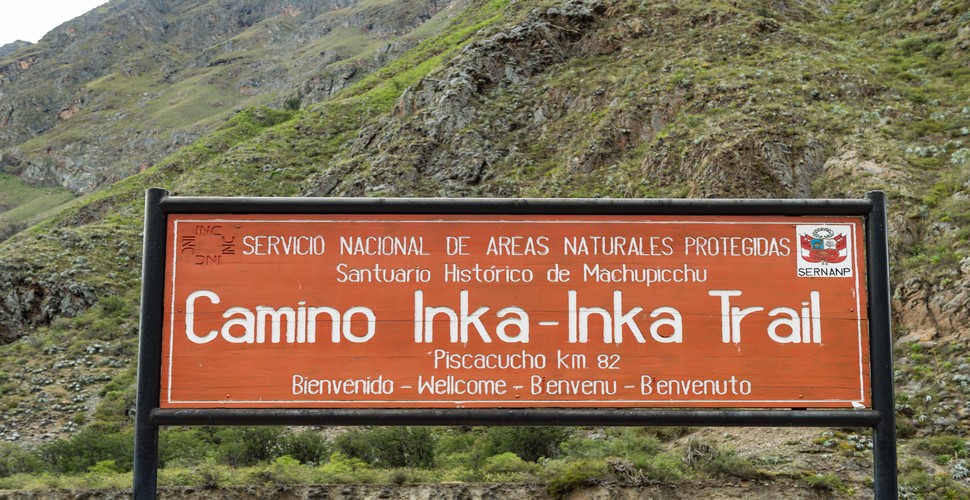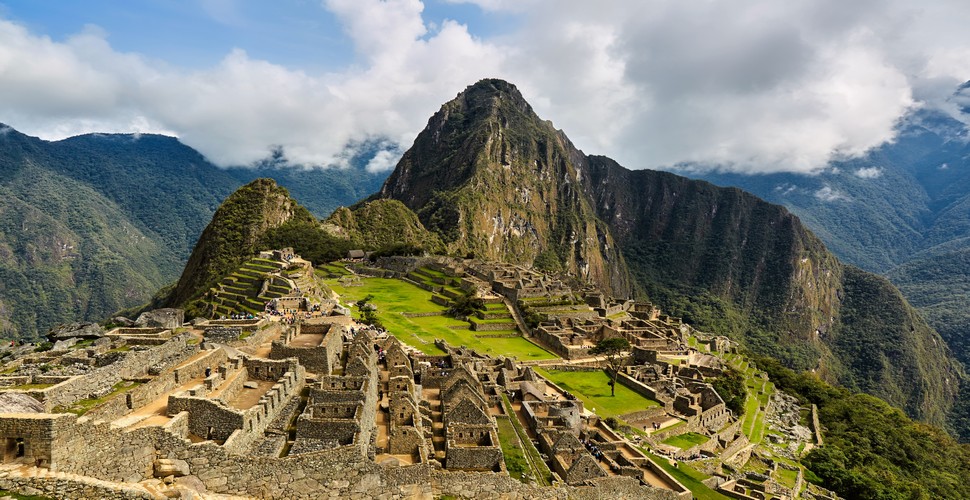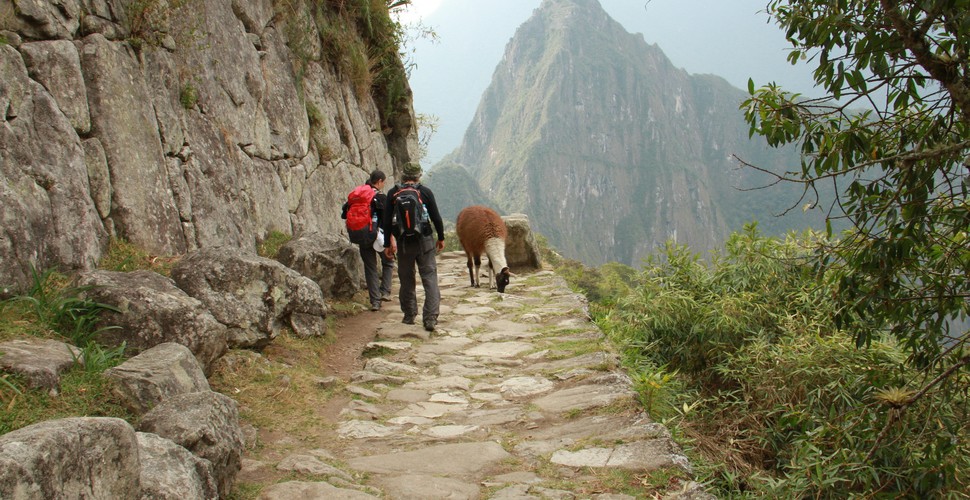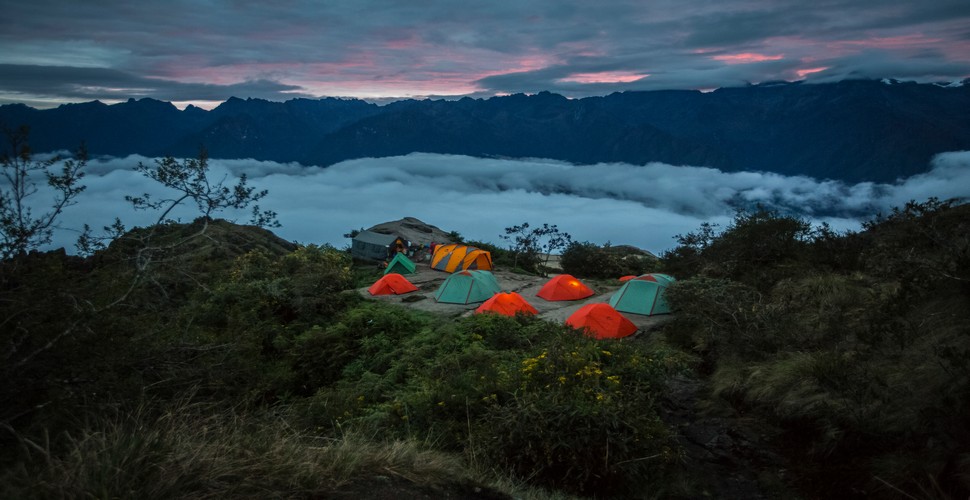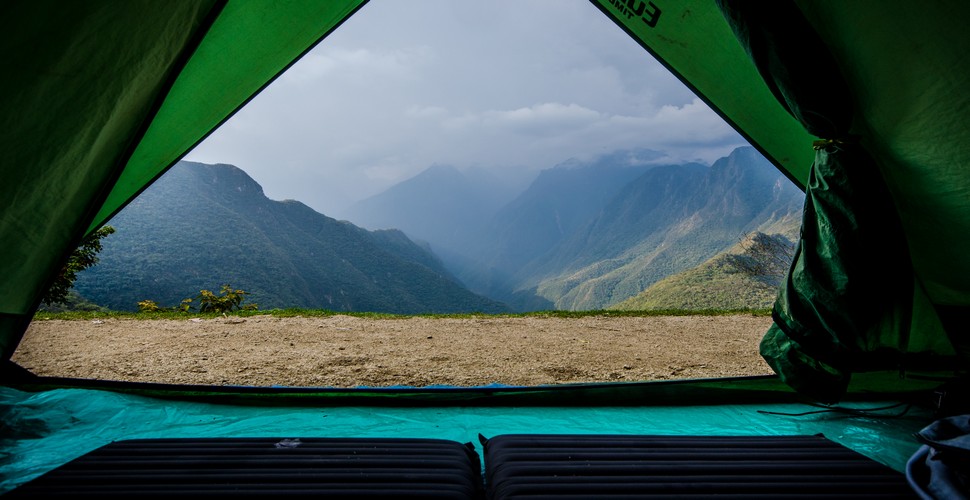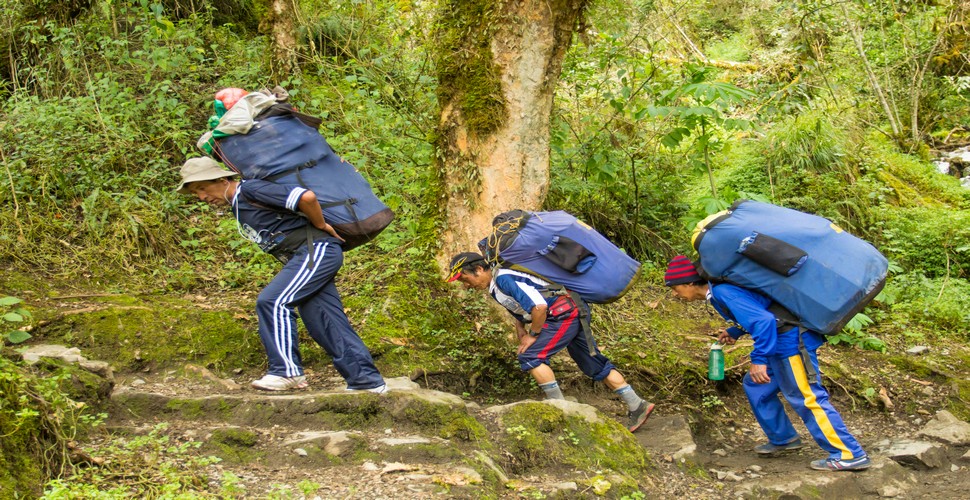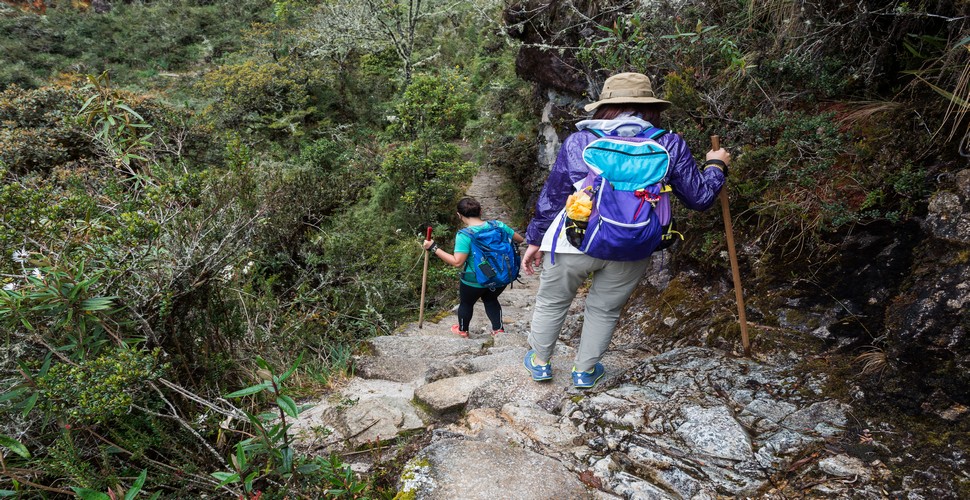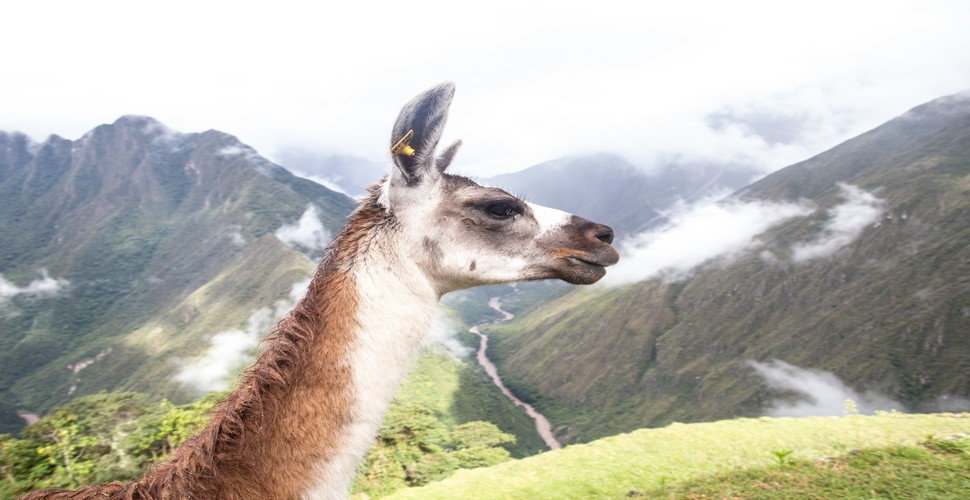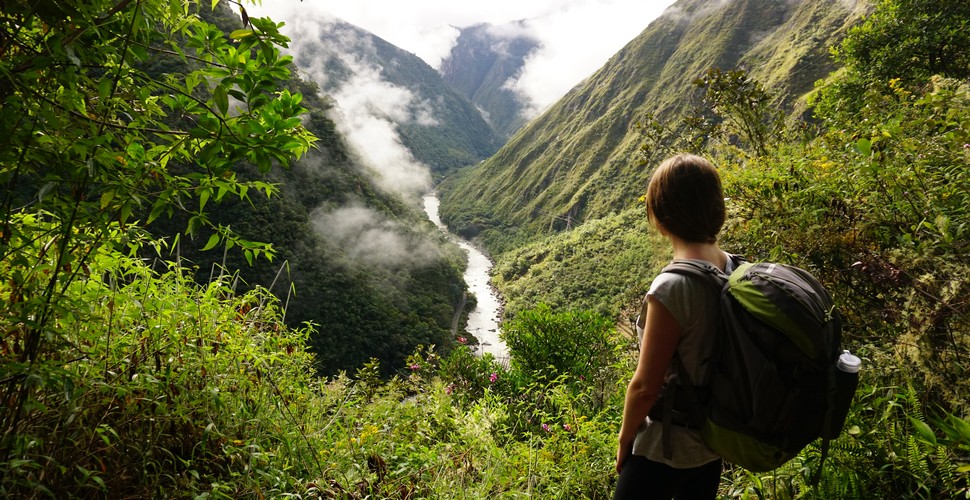

Claire Dean
Travel in South America is a joy to behold. The rich variety of destinations, experiences, landscapes and geography fascinated me so much, that I chose to relocate here, over 20 years ago! The best thing I ever did! Allow me to share my knowledge and passion for Central and South America with you and help you plan your holiday of a lifetime!

ALL YOU NEED TO KNOW ABOUT THE INCA TRAIL TREK TO MACHU PICCHU FOR 2025
Written by:Claire Dean
Last Update: 2025-02-10
The Machu Picchu Trek via the Inca Trail is one of the most well-known trekking routes in the world. This bucket-list trekking expedition in The Andes of Peru is top of the list for adventure travel in South America! The Inca trail takes you on a route through the legendary Sacred Valley of Peru, past ruined Incan settlements that date back 500 years, and snow-capped Andean peaks that spike through the clouds. 2025 is the perfect year to tick off the epic Inca trail from your list of exciting things to do! The Inca Trail to Machu Picchu is blessed with mind-blowing scenery, fascinating archaeological sites, pristine Andean nature, and an indescribable magic that can only be experienced on this ancient Machu Picchu Trek via the Inca Trail. The classic Inca Trail Trek is the perfect Peru adventure tour for all the family, a group of friends, work colleagues, or even an Inca Trail adventure for solo travelers to Machu Picchu. In fact, the Inca Trail can be hiked by anyone in a Good physical state, who has acclimatized well prior to the trek and is up for a unique challenge! We are getting close to the time when the government issues Inca Trail permits for next year, but it is vital that you book early. Permits will go on sale the first week of October for 2024 to be able to Trek in 2025. The earlier you book, the more chance you have of securing permits for your preferred travel dates. If you are looking to hike one of the best treks in the world next year, look no further! Valencia Travel can offer any dates to hike the Classic Inca Trail for the upcoming year. However, there are some things that you should be aware of if you are looking to hike this world-famous trail. Read on for more information!
KM 84 Of The Classic Inca Trail
Why Hike the Inca Trail to Machu Picchu?
The Inca Trail to Machu Picchu is for those seeking a profound connection with nature and history. The hike is a pilgrimage through landscapes that shift from alpine meadows to subtropical forests, all while tracing the footsteps of a people who carved a thriving civilization amidst these rugged peaks. The reward at the end, the sunrise over Machu Picchu, is more than a view; it's a glimpse into the past, a testament to human ingenuity. This bucket-list trek for many, is one of the most iconic treks in the world and the only trek that allows you to trek directly into Machu Picchu as the Incas once did.
The trail offers not just physical challenges but is a test of mental and emotional resilience. The Inca ruins dotted all along the Inca Trail to Machu Picchu, the camaraderie among fellow trekkers, and the thrill of conquering mountain passes create a symphony of experiences that linger in your memory long after the journey ends. The trek along the Inca trail to Machu Picchu is amazing in so many ways that people from around the world to take part in this epic journey, which combines stunning scenery, awe-inspiring trekking, and the final destination the Inca citadel of Machu Picchu. If you plan to hike the trail next year, contact Valencia Travel for Inca Trail 2025 Departures, Guaranteed. Some trips we take to reach a destination, others we take for the pleasure of the journey itself. The Inca Trail to Machu Picchu is both! Read on for information about the All-Inclusive Inca Trail Trek 2025.
Machu Picchu
A Step By Step Guide For How to Reserve Your Inca Trail Trek to Machu Picchu
- 1. Check the calendar below for available dates, then click the “book now” button to reserve your Inca Trail Trek for your preferred dates!
- 2. Complete the form with your personal information and select the type of Inca Trail tour and the number of passengers for your trek.
- 3. You can also add extra services such as Huayna Picchu tickets, and Machu Picchu Mountain tickets, upgrade your train tickets, or book add-on Cusco tours before or after your Inca Trail Trek!
- 4. Review and accept our service policies before submitting the form, make sure you are in agreement, then submit the form. You will have the option to pay your Inca Trail deposit via Bank Transfer or by Credit Card (an additional fee applies).
The Perfect View of Llama and Huayna Picchu
Calendar 2025 Inca Trail Permit Availability - LIVE!
IMPORTANT TO NOTE: The Inca Trail Permit Availability Calendar will show 100% permit availability for 2025 until the Peruvian government releases the permits in October 2024. However, this does not mean that all those permits are open! There are several Inca Trail operators, all of whom will be securing their permits for their customers and will purchase them on the first day that the permits are released for sale. Here, at Valencia Travel, we will be able to reserve your permits for your chosen dates as long as you have made your Inca Trail Trek deposit before permits go on sale.
Suppose you don’t see permits for your ideal trekking dates for the Inca Trail Trek. In that case, we highly recommend reserving your Inca Trail permits first, then booking your flights and accommodations to avoid disappointment. Plus, it is worth exploring the spectacular alternative Inca Trail treks that will also get you to Machu Picchu, if there are no Inca Trail permits for your travel dates.
If you have any questions about Inca Trail availability, please contact us here and we can explain the Inca Trail booking process in full!
Inca Trail Campsite
How Difficult is the Inca Trail to Machu Picchu?
The Inca Trail demands physical fitness, but the pace is moderate, allowing time to savor the surroundings. Our expert guides will judge the pace of the trekking group and adjust times accordingly, which is why you choose a reputable Machu Picchu tour company. Altitude is a major factor on the Inca Trail to Machu Picchu, so acclimatization is key. The journey is challenging but accessible to those with determination, preparation, and most of all a positive attitude! The trek is of a middle to high range of difficulty so we recommend a few day treks at home prior to the trek and cardiovascular exercise (running, cycling, walking, aerobics) always helps with fitness levels in preparation for any of our Peru tour packages.
The Inca trail can be difficult depending on your level of fitness, mental attitude, hiking experience, and level of acclimatization. Most people will tell you that the 2nd day is the most challenging and this is the day you will reach the highest elevation of all of the trek. However, others have more issues on the downhill section on day 3, especially if you have any knee issues. The group dynamics will also affect the difficulty. Some important things to remember are... This is not a race! The hike is stunningly beautiful and the slower you go, the better, to take in these magnificent views. Your hiking speed is assessed without you knowing it on day one and there will be a guide ahead and a guide behind so go at your own comfortable pace. Positivity… is a hiker's best friend! This will get you through the most difficult sections of the trek, every time!
Stick or no sticks…that is the question! Some people will prefer to trek with hiking poles and some will not. This really comes down to personal preference but especially for the downhill sections walking sticks are a hiker's best friend. They can help you keep your balance, take the weight off your knees on the downhill, and give you an extra push up the steep ascents. I personally take 1 stick and change hands regularly, others prefer 2 walking poles and some prefer none… whatever is the most comfortable for you, is what we recommend.
Camp Site on the Inca Trail
Inca Trail Treks – Which One Should You Choose?
While our most popular tour is the Classic4-Day Inca Trail Trek to Machu Picchu, we have Inca Trail trips that range from 2 days to 7 days. Check our Inca Trail options below and choose the Inca Trail trek that is best suited to you!
- Classic Inca Trail - 4 Days (Group Tour)
- Classic Inca Trail - Premium 4 Days (Private Tour)
- Classic Inca Trail Trek to Machu Picchu - 5 Days (Group Tour)
- Short Inca Trail to Machu Picchu - 2 Days (Group Tour)
- Inca Trail Express to Machu Picchu - 5 Days (Group Tour)
- Hike The Inca Trail To Machu Picchu - 7 Days (Group Tour)
- Salkantay & Inca Trail to Machu Picchu - 7 days (Group Tour)
- Salkantay and Short Inca Trail Trek - 6 Days (Group Tour)
Read our Inca Trail Essentials about Hiking the Inca Trail to Machu Picchu here!
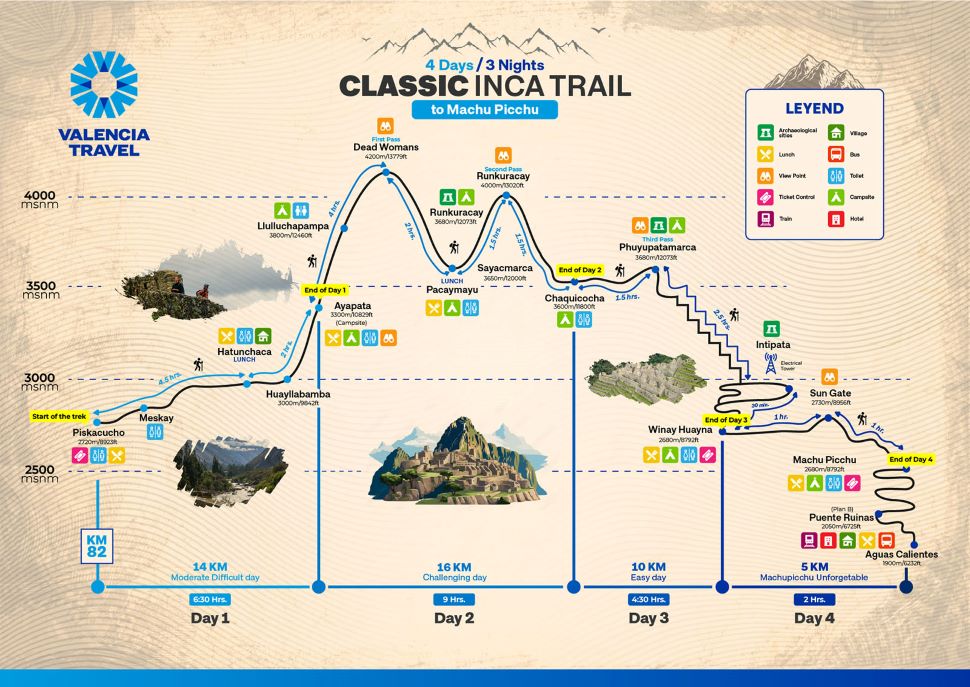
Classic Inca Trail Map
Why Choose Valencia Travel for your Inca Trail Trek?
Valencia Travel is a Local, Sustainable, Award-Winning Inca Trail and Peru Tour Operator based in Cusco, Peru.
- Extraordinary Life experiences
Transform, renew, and reconnect with life. Discover new ways to see the world and experience the magic that encompasses Peru. We have defined Inca Trail to Machu Picchu itineraries, that incorporate freedom and flexibility for our trekkers. - Reconnection with the real world.
We changed the definition of luxury for your well-being with the places we visit, the local cultures, and the appreciation of the natural beauty that surrounds us, encouraging physical and mental well-being to reconnect once more with life. - Profound local experience.
We want to share the essence of our region, whether that be eating some local food, sharing some amazing local sites, or learning about mysterious history and folklore. Our immersive experiences will enable you to submerge yourself into different local cultures. Our travel experts will show you a different side to the places we visit, and we will always be available with their knowledge and local advice. - Attention 24/7
We are available and connected with the world; we are always available for whatever our clients need. Simply give us a call or send us an email. We operate 24 hours a day, 7 days per week, and 365 days a year. - 100% Guaranteed departures.
All of our Inca Trail departures are guaranteed. Once the trip has been reserved and paid for, we will guarantee your trip.
We will not under any circumstances cancel your Inca Trail trek to Machu Picchu. The only reason your travel could be postponed would be due to issues of public security or extreme weather conditions. - Guarantee of best quality.
We are committed to fulfilling the highest possible international standards of service as well as standards of security and safety. We also offer regular training courses to our guides, field staff, and office staff as they will be the first contact with our clients and the people who will be responsible for the safety of our clients. - We are worldwide connected!
We form part of a global community of travelers who respect and integrate our own cultures and travelers, to the regions we visit. Through our social commitment policy, we encourage cultural differences to be able to generate a deeper connection. - Responsible travel.
We aim to have a positive impact in any of the areas that we visit. We empower women, indigenous communities, and local people, through training sessions, the careful selection of our providers, and by helping a number of community projects. We are committed to working in a way that is socially and environmentally conscious with the aim of promoting positive change.
The magnificent Inca Trail Porters
Essential Packing List
Packing for the Inca Trail 2024 on your all-inclusive Inca Trail trek 2024 requires careful consideration of various factors, including the climate, duration of the trek, and personal preferences. Here's a detailed packing list to ensure you're well-prepared for your Inca Trail 2024 adventure.
Clothing:
-T-Shirts (2-3) Lightweight, quick-drying shirts to manage sweat.
-Long-Sleeve Shirts (1-2): For sun protection and cooler evenings.
-Hiking Pants (2): Convertible pants are versatile for changing weather.
-Shorts (1): Comfortable for walking in warmer conditions.
-Fleece or Insulating Jacket: Provides warmth during chilly evenings.
-Lightweight Waterproof Jacket: Protects against rain or drizzle.
-Down Jacket or Vest (optional): For added warmth, especially at higher altitudes.
-Hiking Socks (3-4 pairs): Moisture-wicking and comfortable for long walks.
-Underwear (3-4 sets)
-Sun Hat or Cap: Shields from the sun during the day.
-Bandana or Scarf: Versatile for sun protection, dust, or as a headband.
Footwear:
Hiking Boots: Sturdy, well-broken-in, comfortable boots with ankle support.
Camp Shoes: Lightweight sandals or shoes for relaxing at camp.
Rain Gear
Rain Poncho or Jacket: Waterproof protection against rain.
Rain Cover for day pack: Keeps your gear dry during downpours.
A light day pack of 20l approx for essential items during the trek.
Duffel Bag (provided) For porters to carry, should not exceed weight limits (usually around 7 kg or 15 lbs).
Sleeping Gear
Sleeping Bag: Suitable for low temperatures; consider a compact and lightweight option.
Sleeping Bag Liner (optional): Adds warmth and can be used alone on warmer nights.
Trekking Gear
-
Trekking Poles: Offers stability and reduces strain on your knees.
-
Headlamp or Flashlight: Essential for navigating at night.
-
Water Bottle or Hydration System: Stay hydrated with at least a 2-liter capacity.
-
Water Purification Tablets or Filter: Ensure access to safe drinking water.
-
Snacks: Energy bars, trail mix, or your preferred high-energy snacks.
Personal Items
Toiletries: Toothbrush, toothpaste, biodegradable soap, and personal hygiene items.
Sunscreen: High SPF for protection against the strong mountain sun.
Lip Balm with Sunscreen: Prevents chapped lips in dry conditions.
Wet Wipes or Hand Sanitizer: Maintain hygiene during the trek.
Medical Kit
Basic First Aid Kit: Band-Aids, blister treatment, pain relievers, and any personal medications.
Altitude Sickness Medication (if needed): Consult with a healthcare professional.
Other Essentials
-
Passport and Permits: Carry originals and copies in a waterproof bag.
-
Camera or Smartphone: Capture the breathtaking scenery.
-
Chargers and Power Banks: Ensure your devices stay charged.
-
Travel Adapter: If you're carrying electronic devices with different plug types.
-
Money and Credit Cards: Some cash for tips and small purchases; notify your bank of your travel plans.
Optional Items
-
Binoculars: For bird watching or getting a closer look at scenic views.
-
Journal and Pen: Document your journey and thoughts.
-
Insect Repellent: Especially if you're sensitive to bug bites.
-
Travel Pillow: Compact for added comfort during rest stops.
-
Playing cards: to relax a little at the campsite.
-
Ziploc Bags. Keep things dry, keep wet clothes separate!
-
Coca Leaves to give you that extra energy and to share with the porters.
Trek Lightly
How to Prepare for The Inca Trail to Machu Picchu
-
Train not just your body but also your mind for the challenges ahead.
-
Familiarize yourself with the history of the Incas, and let the mystique of Machu Picchu fuel your determination.
-
Acclimatize well spending at least 2 or 3 days in Cusco prior to the trek.
-
Have a medium level of fitness at least to tackle the big mountain passes
Tips on Altitude Sickness
-
Start hydrating well before the trek, and consider altitude medications such as Diamox.
-
Allow time for acclimatization, and listen to your body.
-
The trek is as much a mental challenge as a physical one.
-
Eat small meals based on carbs and light protein.
-
Drink coca tea or coca leaf candies.
-
Sleep well prior to the trek.
Llama on The Trail
Pro Tips for The Inca Trail
-
Engage with the locals; their stories add layers to the journey.
-
Carry a lightweight, foldable daypack for exploring archaeological sites.
-
Take breaks to savor the vistas; the journey is as important as the destination.
-
Porters and cooks will appreciate a small gift of coca leaves or energy bars
-
Porters and cooks expect a tip for their efforts, you will see how hard they work! Work out the tips and make sure you have the correct change as this is hard to find on the trail.
View from The Trail
FAQs about the Inca Trail
Q: How do I secure a permit for the Inca Trail?
A: Permits are limited and sell out quickly. Book through a licensed Peru tour operator such as Valencia Travelwell in advance.
Q: Are there vegan or vegetarian meal options during the trek?
A: Most tour operators accommodate dietary restrictions with advance notice.
Q: Can I bring my own camping gear?
A: While some operators provide gear, if you have specific preferences, check with your operator or bring your essentials.
Q: Is it possible to extend the trek or spend extra time at Machu Picchu?
A: Some operators offer extended itineraries or additional time at Machu Picchu; discuss options when booking.
Q: How long is the Inca Trail?
A: The Classic Inca Trail is approximately 26 miles (43 kilometers) long and typically takes four days to complete. The Short Inca Trail, which is a shorter version, is around 10 miles (16 kilometers) and is usually completed in two days.
Q: What is the highest point on the Inca Trail?
A: The highest point on the Classic Inca Trail is Warmiwañusca, also known as Dead Woman's Pass, at an elevation of 13,828 feet (4,215 meters) above sea level.
Q: Is a permit required for the Inca Trail?
A: Yes, a permit is required to trek the Inca Trail. Permits are limited, and it's essential to book well in advance, especially for the Classic Inca Trail.
Q: How far in advance should I book the Inca Trail?
A: It's recommended to book the Inca Trail at least 6 months in advance, especially for the peak trekking season from April to October.
Q: Are there age restrictions for the Inca Trail?
A: There is no strict age limit for the Inca Trail, but participants should be in good physical condition. The trek is generally suitable for those aged 12 and above.
Q: Do I need to hire a guide for the Inca Trail?
A: Yes, hiring a licensed guide is mandatory for the Classic Inca Trail. For other trails, it's advisable for safety, cultural insights, and navigation.
Q: Are there bathrooms along the Inca Trail?
A: There are basic restroom facilities at some campsites and along the trail. However, be prepared for rustic conditions, and it's advisable to carry your own toilet paper.
Q: What is the weather like on the Inca Trail?
A: The weather varies, but generally, the dry season from April to October is the most popular for trekking. Daytime temperatures can range from 60°F to 70°F (15°C to 20°C), while nights can be cold, especially at higher altitudes.
Q: What is the best time of year to trek the Inca Trail?
A: The optimal time is during the dry season, from April to October when the weather is generally clear. The wet season (November to March) brings more rain, and the trail is closed in February for maintenance.
Q: Is altitude sickness a concern on the Inca Trail?
A: Yes, altitude sickness can be a concern, especially on the Classic Inca Trail, which reaches high elevations. It's essential to acclimatize in Cusco before starting the trek, stay hydrated, and inform your guide of any symptoms.
Q: Can I trek the Inca Trail on my own?
A: While it's possible to trek the Short Inca Trail independently, the Classic Inca Trail requires hiring a licensed tour operator, as independent trekking is not allowed.
Q: Are there vegetarian or special dietary options on the Inca Trail?
A: Most tour operators can accommodate dietary restrictions with advance notice. It's crucial to communicate any dietary preferences or restrictions when booking your trek.
Q: Can I visit Machu Picchu without trekking the Inca Trail?
A: Yes, there are alternative ways to reach Machu Picchu, such as taking a train from Ollantaytambo or Aguas Calientes. However, trekking the Inca Trail provides a unique and immersive experience.
Q: Can I combine the Inca Trail with other treks or activities?
A: Yes, some tour operators offer combination packages that include additional treks or cultural experiences along with the Inca Trail. This allows for a more comprehensive exploration of the region.
Q: Are there restrictions on photography on the Inca Trail?
A: While photography for personal use is generally allowed, the use of drones is prohibited. Commercial photography or filming requires special permits. Always be respectful of local customs and regulations.
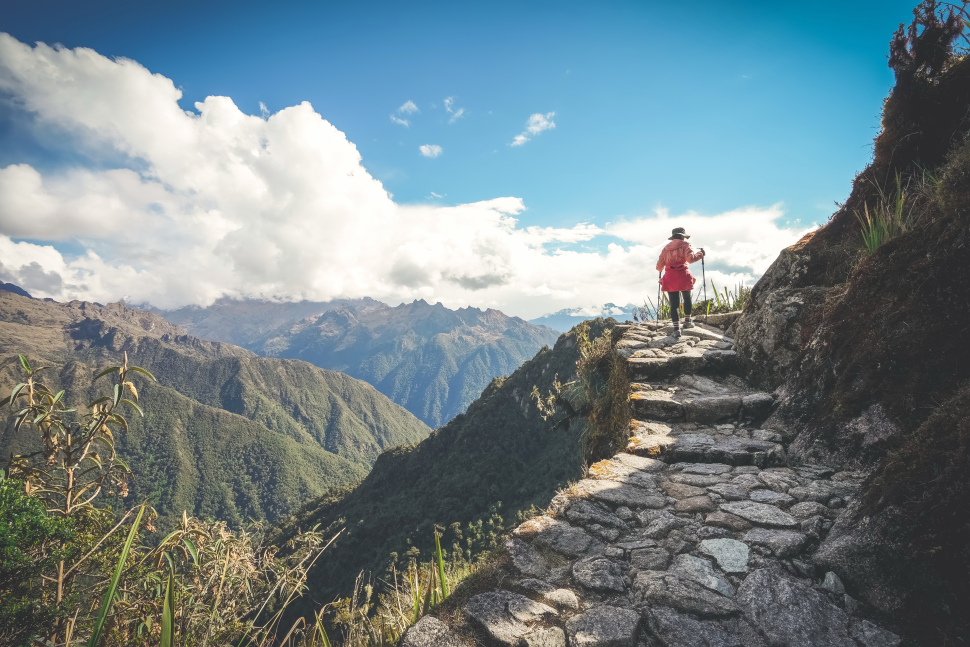
Inca Trail Vistas
Remember, this is a once-in-a-lifetime experience, make the most of it! Go prepared and most of all take with you a positive attitude and you will have the best Inca Trail experience ….. ever!


